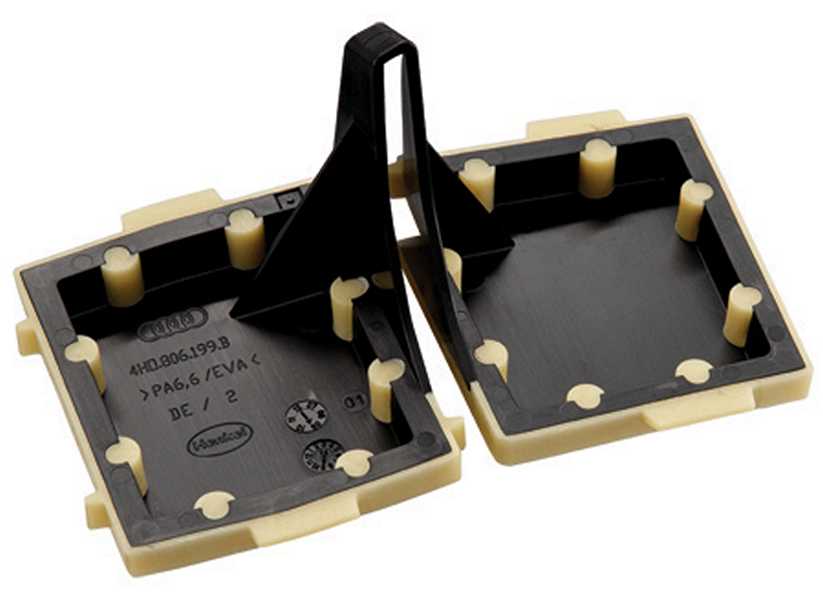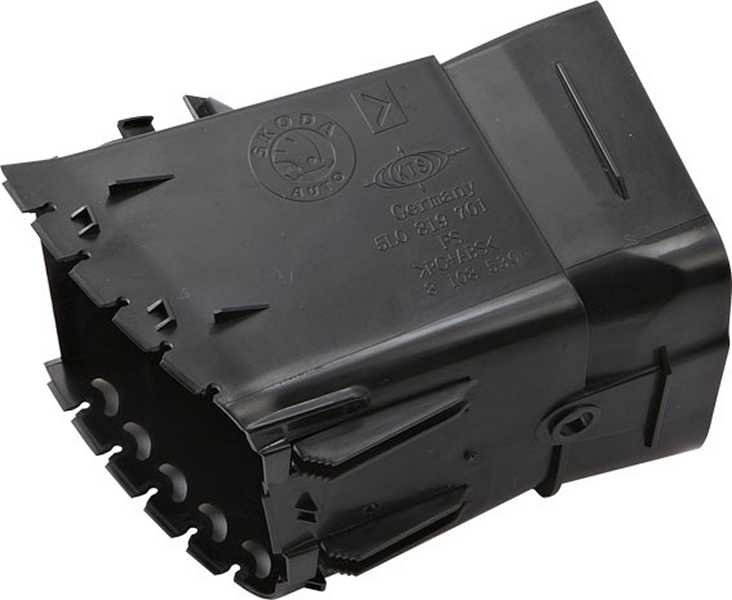In-Mold Labeling Injection Molding: Enhancing Aesthetics and Efficiency
In-mold labeling (IIntroduction to In-Mold Labeling (IML) in Injection MoldingML) has revolutionized the field of injection molding, providing a versatile and efficient method of incorporating labels directly into plastic parts during the manufacturing process. By fusing the label and the plastic material together, IML offers numerous advantages, including enhanced aesthetics, durability, and cost savings. This article explores the key components, process flow, benefits, challenges, and future trends of in-mold labeling injection molding.
Key Components of In-Mold Labeling Injection Molding
To understand the process of in-mold labeling injection molding, it’s crucial to familiarize ourselves with the key components involved. These include the injection molding machine, mold design and construction, in-mold labeling system, and label material selection.
The injection molding machine serves as the primary apparatus for melting and injecting the plastic material into the mold. It provides precise control over temperature, pressure, and cycle times to ensure optimal results. The mold design and construction, on the other hand, play a vital role in creating cavities and channels for the plastic material and label placement.
The in-mold labeling system is an integral part of the process, facilitating the precise placement of the label inside the mold. It involves specialized equipment such as robots or automated systems that position the labels accurately. Additionally, selecting the right label material is crucial for achieving proper adhesion and durability during the injection molding process.
Process Flow of In-Mold Labeling Injection Molding
The process of in-mold labeling injection molding consists of several steps that ensure seamless integration of the label and the plastic part. Let’s explore the process flow in detail:
- Preparation and setup: This phase involves selecting and preparing the label, as well as assembling and setting up the mold and injection molding machine. The label is carefully chosen based on its design, material, and compatibility with the plastic substrate. The mold is prepared and aligned with precision, while the injection molding machine is configured to the desired specifications.
- Injection molding process: Once the setup is complete, the injection molding process commences. The mold is closed and clamped, creating a sealed cavity for the plastic material. The molten plastic is then injected into the mold, filling the cavities and surrounding the label. During this stage, the in-mold labeling system ensures accurate placement of the label.
- Cooling and solidification: After the plastic is injected, the mold is cooled to allow the plastic to solidify. This ensures the label becomes an integral part of the plastic part, providing enhanced durability and resistance to wear.
- Mold opening and ejection: Once the plastic has sufficiently cooled and solidified, the mold is opened, and the finished part is ejected. The in-mold labeling process eliminates the need for separate labeling or secondary operations, saving time and resources.
- Post-processing and quality control: The ejected parts undergo trimming and finishing to remove any excess plastic or imperfections. Comprehensive inspection and quality control measures are implemented to ensure the final product meets the desired standards.
Benefits and Applications of In-Mold Labeling Injection Molding
In-mold labeling injection molding offers several compelling benefits that have made it a popular choice in various industries. Let’s delve into some of the key advantages and applications:
Enhanced aesthetics and branding opportunities: IML allows for high-resolution graphics and vibrant designs, resulting in visually appealing products. Brands can leverage this capability to enhance their product’s appearance, differentiate themselves in the market, and strengthen brand recognition.
Improved durability and resistance to wear: By incorporating the label into the plastic part, IML ensures superior durability. The label is protected from abrasion, moisture, and fading, providing long-lasting branding and product information. This durability makes IML particularly suitable for products subjected to harsh environments or frequent handling.
Cost savings and efficiency gains: In-mold labeling injection molding streamlines the production process by eliminating the need for separate labeling operations. This reduces labor costs, minimizes production time, and decreases the risk of labeling errors. Additionally, IML can eliminate the need for secondary packaging or labeling, further reducing costs and simplifying logistics.
Common applications and industries: In-mold labeling injection molding finds applications in a wide range of industries. It is commonly used in the packaging industry for containers, cups, and lids, where eye-catching designs and branding are crucial. Additionally, it is employed in the automotive sector for interior trims, electronic appliances for control panels, and consumer goods for decorative items, to name a few.
Challenges and Considerations in In-Mold Labeling Injection Molding
While in-mold labeling injection molding offers significant advantages, it is essential to address certain challenges and considerations:
Label placement and alignment: Accurate label placement within the mold is critical to ensure precise positioning on the final product. Challenges may arise due to complex part geometries or curved surfaces, requiring careful mold design and labeling system adjustments.
Material compatibility and adhesion: Proper selection of label materials is crucial to ensure compatibility with the plastic substrate and achieve strong adhesion. Factors such as temperature, mold release agents, and surface treatments must be considered to achieve optimal bonding.
Mold and tooling modifications: Implementing in-mold labeling may require modifications to existing molds or tooling. These modifications can involve the integration of label placement mechanisms or adjusting mold tolerances to accommodate the label thickness.
Production volume and cost considerations: In-mold labeling injection molding is well-suited for medium to high-volume production runs. However, for low-volume productions, the costs associated with mold design, labeling systems, and setup may be less economical. It is essential to evaluate production volume and cost implications when considering the implementation of IML.
Future Trends and Innovations in In-Mold Labeling Injection Molding
The field of in-mold labeling injection molding continues to evolve, with ongoing advancements and innovations. Here are some future trends to watch out for:
Advanced label materials and technologies: Researchers and manufacturers are continually developing new label materials that offer improved adhesion, durability, and sustainability. These materials may include biodegradable options or those with enhanced resistance to chemicals and UV exposure.
Integration of smart labels and RFID tags: The integration of smart labels and RFID (Radio Frequency Identification) tags within the in-mold labeling process opens up possibilities for enhanced product tracking, supply chain management, and interactive customer experiences.
Automation and robotics in IML injection molding: Automation plays a crucial role in streamlining the in-mold labeling injection molding process. Robotics and automated systems enable precise label placement, reduce human error, and increase production efficiency. As technology advances, further automation and integration of robotics are expected to optimize IML processes.
At Sincere Tech, we are dedicated to maintaining our position as a leading plastic mold company by embracing industry advancements and anticipating future trends. We actively explore innovative materials and composites that offer improved performance and sustainability. Through ongoing investments in research and development, we deliver cutting-edge solutions that address the evolving needs of our customers. As one of the best injection mold suppliers in China, we pride ourselves on our commitment to excellence.
In line with our commitment to sustainability, we prioritize environmentally friendly practices. We proactively seek sustainable alternatives, such as biodegradable polymers, and implement recycling initiatives to minimize the environmental impact of our manufacturing processes. By choosing our custom injection molding services, you can align your brand with sustainable manufacturing practices and contribute to a greener future.
Quality is of the utmost importance to us, and we maintain stringent quality control measures throughout the entire manufacturing process. Our state-of-the-art facilities and skilled technicians ensure that each product undergoes rigorous inspection and testing, guaranteeing exceptional performance, reliability, and customer satisfaction.
When you partner with Sincere Tech as your preferred China mold maker, you can expect the highest level of professionalism, expertise, and innovation. We are dedicated to helping you bring your ideas to life, delivering superior products that excel in performance, durability, and cost-effectiveness.
Our expanded capabilities include:
- Rapid Prototyping: We offer rapid prototyping services to quickly transform your concepts into tangible prototypes, allowing for iterative design improvements and accelerated product development.
- Precision Tooling: Our advanced tooling capabilities enable us to create high-quality molds with tight tolerances, ensuring consistency and precision in your injection-molded products.
- Overmolding: We specialize in overmolding, which allows for the combination of multiple materials or components, resulting in enhanced functionality, aesthetics, and durability.
- Insert Molding: Our expertise in insert molding enables us to securely encapsulate inserts within the molded parts, facilitating efficient assembly and enhancing product performance.
- Two-Shot Molding: With two-shot molding, we can produce complex, multi-material components in a single operation, reducing assembly requirements and enhancing design possibilities.
- Value-Added Services: In addition to injection molding, we offer a range of value-added services, including product assembly, packaging, and logistics support, streamlining your supply chain and reducing costs.
Partner with Sincere Tech Mould suppliers for your custom injection molding needs, and benefit from our comprehensive capabilities, unwavering commitment to quality and sustainability, and our drive to exceed your expectations at every step of the process. Together, let’s bring your innovative ideas to life.
Conclusion
In-mold labeling injection molding offers a powerful solution for incorporating labels seamlessly into plastic parts, providing enhanced aesthetics, durability, and cost savings. By understanding the key components, process flow, benefits, challenges, and future trends of IML, manufacturers can leverage this innovative technique to create visually appealing, high-quality products across a range of industries. As advancements continue to reshape the field, in-mold labeling injection molding remains at the forefront of efficient and impactful manufacturing processes.
